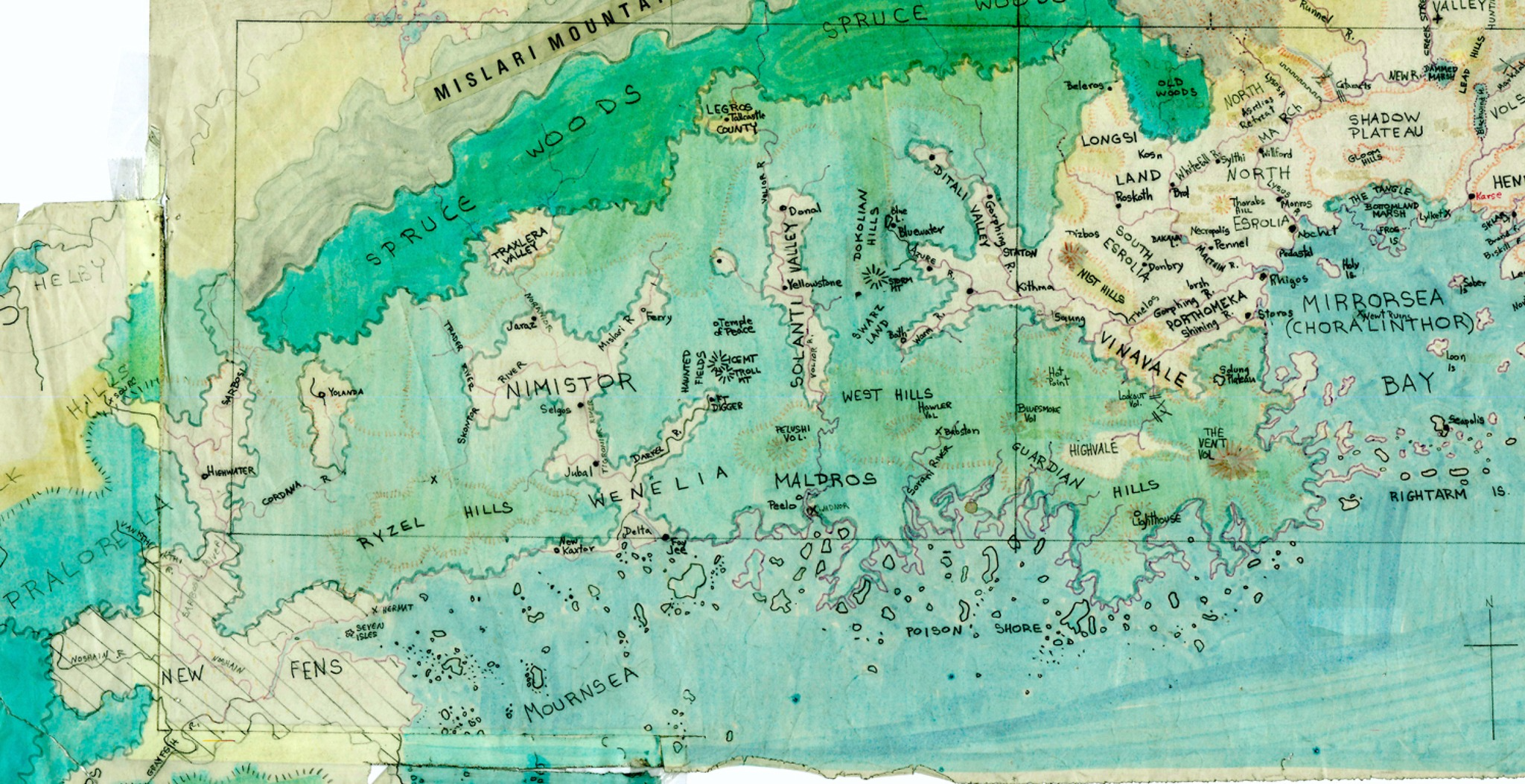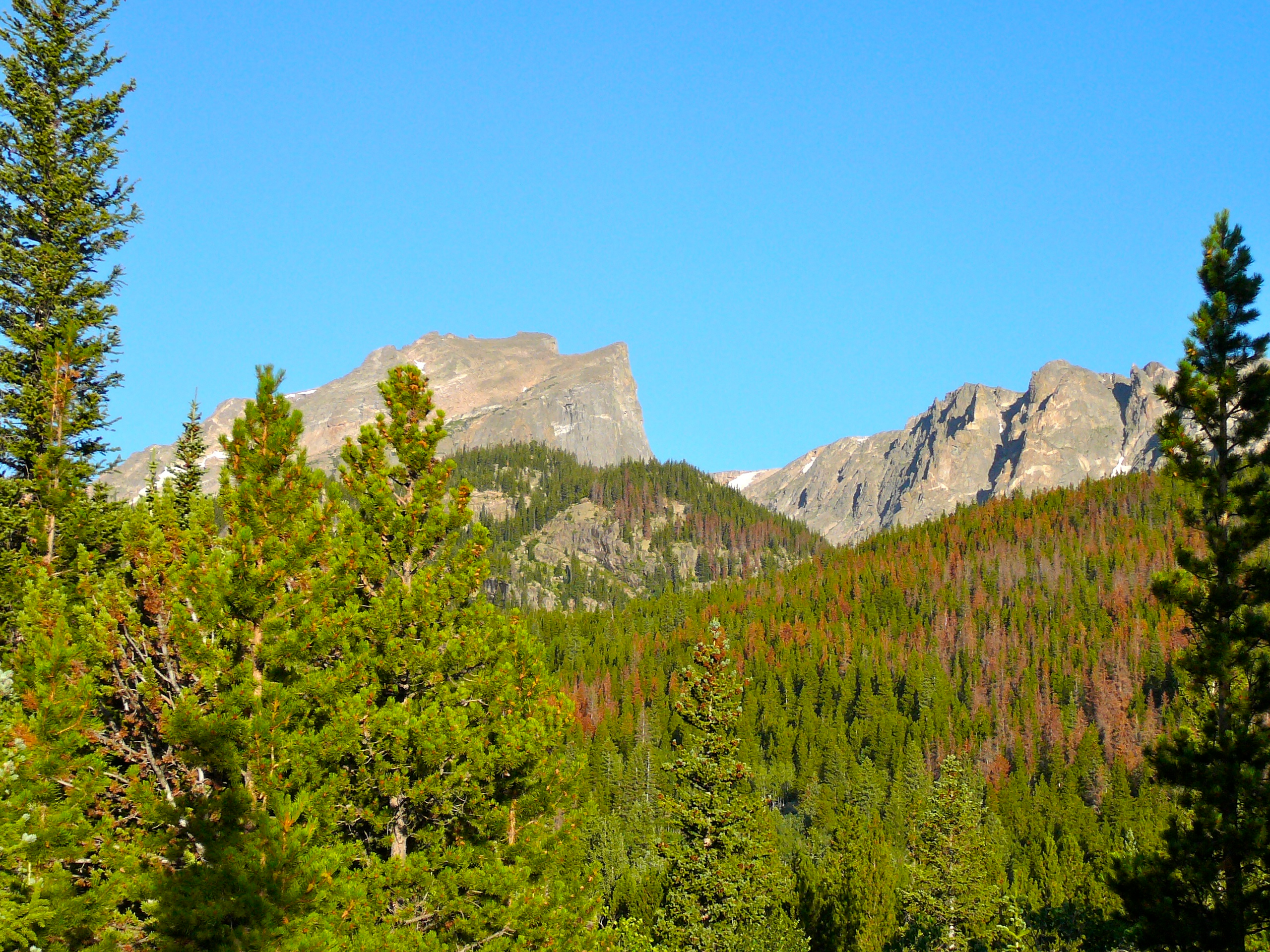One thing I enjoy doing is playing around with different projects of maps, to see if I find something new or interesting.
This map of Maniria paints an interesting picture for me. We can see Helby (a principality in Ralios) in the far west, one end of the caravan route. We can also see Esrolia and the Mirrorsea Bay, the other end of the caravan route, a little over 500 km as the wyrm flies. And we can see the settled river valleys, where Orlanthi farmers and herders have tamed the woods. To the north is the impassable Spruce Woods of the Arstola Elf Forest.
From here it is pretty easy to work out the various caravan routes. Small cities like Bath, Yellowstone, Ferry, Selgos, Yolanda, and Highwater, can be thought of as caravanserai and market towns, ruled by Trader Princes. The surrounding lands are inhabited by the aforementioned Orlanthi farmers and herders who use the markets and provide the food, warriors, etc.
Esrolia’s infuence is obvious. The Ditali are only about 120 km from Nochet. No doubt Esrolia influences art, fashion, and luxury goods, although Orlanth, and not Ernalda, is the local ruling deity.
The caravan trek took about a season each way, with stops at each Trader Prince settlement for trading, rest, and resupply. The route can be done faster on horseback – as few as four weeks if you really push it.
You can also see how the Opening must have stolen traffic from this trade route. It is much easier to take goods from Ralios down to the Seven Islands of Handra, and from there load it onto ships and sail to Nochet, and vice versa. That journey is only eight or nine days, instead of a season. And it is MUCH cheaper to carry goods by boat than by mule.

See Also
![]()
![]()
And so Handra is also a city of trade. Almost an economic colony of Nochet, with plenty of refugees from Dragon Pass, it really has no hinterland or territorial ambitions, living entirely off trade and shipping.
From 1300-1500, these Manirian Orlanthi lands were likely wealthier, more cosmopolitan, and sophisticated that the settlements in eastern Dragon Pass. They remained important for the next century, although Sartar quickly surpassed them. Sartar, after all, was the crossroads between the Lunar Empire and the Holy Country. But Maniria was still a rich trade route.
This declined after 1580, and that decline has reduced the former Trader Princes to genteel poverty and irrelevance. War and raiding is a better gamble for wealth than declining trade.
The Mislari Mountains are pretty high – the shoulder of that range is about 2250 meters high, and at least one peak is around 4000 meters – the highest peak of the range west of the Skyreach Mountains (which have a few peaks over 4000 meters). They no doubt dominate the landscape.
This is what I imagine things might look like near the Mislari Mountains:

One thing worth keeping in mind – these tribal confederations are big and unwieldy, with no Orlanth Rex cult present to hold them together. For example:
- Ditali have 210k people
- Solanthi have 140k people
- Nimistor have 136k people
These are big confederations, each comparable to Sartar in numbers. Without the Orlanth Rex cult like Sartar (or pre-Lunar Tarsh), they are inherently unstable. When the Trader Princes had all that revenue from trade, they could use their wealth to smooth things out, but now that has declined.
These confederations never likely saw a need for Orlanth Rex. Sartar and the Hendriki got the cult from the Tarshites. King Sartar strongly embraced the Orlanth Rex cult and it is at the core rites of his kingdom.
